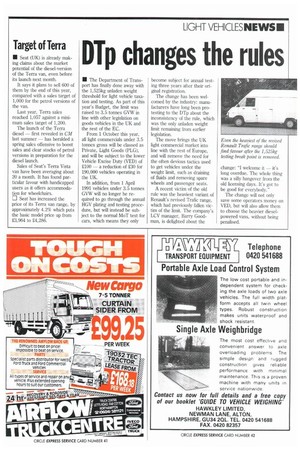Dip changes the rules
Page 29

If you've noticed an error in this article please click here to report it so we can fix it.
• The Department of Transport has finally done away with the 1,525kg unladen weight threshold for light vehicle taxation and testing. As part of this year's Budget, the limit was raised to 3.5 tonnes GVW in line with other legislation on goods vehicles in the UK and the rest of the EC.
From 1 October this year all light commercials under 3.5 tonnes gross will be classed as Private, Light Goods (PLC), and will be subject to the lower Vehicle Excise Duty (VED) of £100 — a reduction of £30 for 190,000 vehicles operating in the UK.
In addition, from I April 1991 vehicles under 3.5 tonnes GVW will no longer be required to go through the annual HGV plating and testing procedure, but will instead be subject to the normal MoT test for cars, which means they only become subject for annual testing three years after their original registration.
The change has been welcomed by the industry: manufacturers have long been protesting to the DTp about the inconsistency of the rule, which was the only unladen weight limit remaining from earlier legislation.
The move brings the UK light commercial market into line with the rest of Europe, and will remove the need for the often devious tactics used to get vehicles under the weight limit, such as draining of fluids and removing spare wheels and passenger seats.
A recent victim of the old rule was the heaviest variant of Renault's revised Trafic range, which had previously fallen victim of the limit. The company's LCV manager, Barry Goodman, is delighted about the change: "I welcome it — it's long overdue. The whole thing was a silly hangover from the old licensing days. It's got to be good for everybody."
The change will not only save some operators money on VED, but will also allow them to choose the heavier dieselpowered vans, without being penalised.
















































































































































